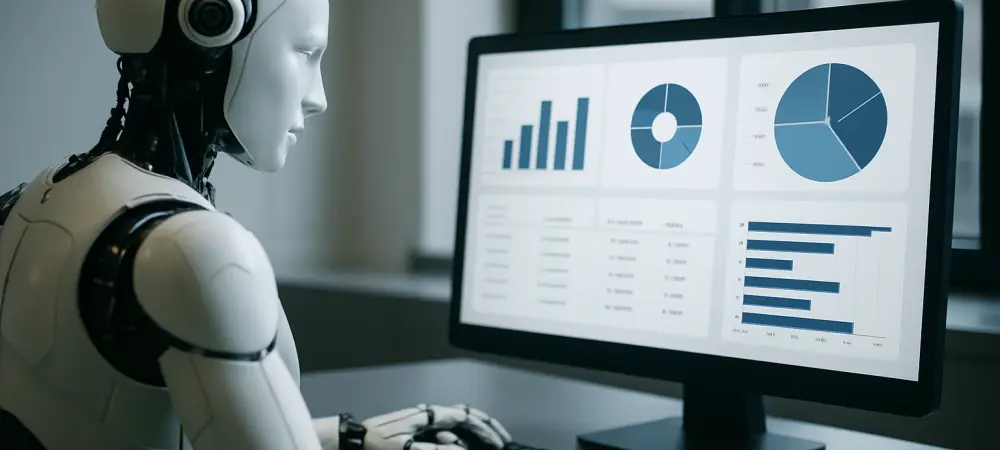Setting the Stage for a Transformative Market Shift
Imagine a manufacturing giant facing a sudden supply chain disruption, with inventory levels plummeting and production lines at risk of stalling. In just minutes, an intelligent system detects the issue, triggers automated supplier negotiations, and reroutes logistics—all without any human intervention. This scenario is no longer a distant vision but a tangible reality in today’s enterprise resource planning (ERP) market, driven by the convergence of event-driven architecture and agentic AI. These technologies are reshaping ERP from static, manual systems into dynamic, autonomous networks capable of real-time decision-making. This market analysis explores the current trends, data-driven insights, and future projections surrounding this transformation, highlighting why businesses must adapt to stay competitive in an increasingly volatile digital landscape. The stakes are high, and understanding this shift is critical for industry leaders aiming to harness innovation as a strategic asset.
Decoding Market Trends and Technological Disruptions
The Surge of Event-Driven Architecture in ERP Solutions
The ERP market is witnessing a seismic shift as event-driven architecture gains traction among forward-thinking enterprises. Unlike traditional systems that rely on scheduled updates or manual inputs, event-driven ERP platforms respond instantly to business triggers such as stock shortages or delivery delays. Market data indicates that the adoption of real-time responsiveness tools has grown by over 30% in sectors like logistics and retail since the start of this year, driven by the need for operational agility. For instance, a major retailer can now automatically generate purchase orders the moment inventory dips below critical thresholds, slashing response times significantly. However, the risk of flawed data triggering erroneous automated actions remains a concern, pushing vendors to prioritize robust validation mechanisms in their offerings.
Agentic AI: A New Frontier for Autonomous Operations
Another transformative force in the ERP landscape is agentic AI, which introduces autonomous, goal-oriented agents capable of managing complex workflows with minimal oversight. These AI entities handle tasks like financial reconciliation or production scheduling by leveraging business rules and continuous learning algorithms. Industry reports suggest that companies integrating agentic AI into ERP systems have seen a 25% reduction in operational delays, particularly in manufacturing. Yet, challenges around decision transparency and compliance persist, with many businesses wary of delegating critical decisions to AI without stringent governance. This technology promises to free up human resources for strategic initiatives, but its success hinges on balancing autonomy with accountability.
Cross-Platform Collaboration and Niche Market Innovations
The ability of agentic AI to facilitate seamless communication across disparate systems marks a pivotal trend in the ERP market. Agents can now interact directly between ERP, customer relationship management (CRM), and supply chain platforms, enabling intent-driven coordination. For example, a CRM agent identifying a spike in demand can instantly sync with ERP agents to ensure inventory readiness, a process that market analysts predict will cut lead times by up to 40% in high-volume industries. Additionally, niche innovations—such as AI agents interfacing with specialized tools for sustainability tracking—are gaining momentum, allowing ERP systems to remain lean while expanding functionality. Despite the potential, the complexity of standardizing protocols and ensuring data security poses significant barriers to widespread adoption.
Market Projections and Future Growth Trajectories
Adoption Forecasts Across Key Industries
Looking ahead, the ERP market is poised for exponential growth in event-driven and agentic AI adoption, especially in data-intensive sectors like manufacturing and logistics. Projections indicate that by 2027, over 60% of large enterprises in these industries will integrate real-time orchestration capabilities, driven by the immediate value of automated responsiveness. Smaller businesses, however, may lag due to budget constraints and legacy system dependencies, creating a potential divide in market competitiveness. Vendors are expected to capitalize on this trend by offering scalable, modular solutions tailored to varying enterprise sizes, ensuring broader accessibility to cutting-edge technologies.
Emerging Technologies and Regulatory Impacts
The horizon of ERP innovation also includes advancements in machine learning and edge computing, which are set to enhance agentic AI capabilities further. Market insights suggest that edge computing could reduce latency in event-driven responses by processing data closer to the source, a critical factor for industries reliant on split-second decisions. Simultaneously, regulatory pressures are shaping the market, with sectors like healthcare and finance demanding stricter oversight of autonomous AI decisions. Analysts anticipate that compliance frameworks will become a key differentiator for ERP vendors, influencing purchasing decisions over the next few years as businesses prioritize risk mitigation alongside innovation.
Vendor Strategies and Competitive Differentiation
As the market evolves, ERP vendors are shifting from traditional software providers to orchestrators of intelligent ecosystems. Competitive differentiation is increasingly tied to the strength of agent ecosystems and interoperability with third-party tools, with leading players investing heavily in open architectures. Market research highlights that vendors offering robust support for cross-system agent communication could capture a significant share of the market by 2026, particularly among enterprises seeking to avoid vendor lock-in. This strategic pivot is not just about technology but about redefining ERP as a platform for dynamic business models, such as predictive pricing or market expansion analytics, setting the stage for a new era of competition.
Reflecting on Market Insights and Strategic Pathways
Looking back, this analysis delved deeply into how event-driven architecture and agentic AI have redefined the ERP market, uncovering a landscape of rapid innovation tempered by tangible challenges. The trends point to a clear trajectory of real-time responsiveness and autonomous decision-making becoming central to enterprise operations, with significant adoption rates already evident in key industries. Challenges such as data integrity and governance emerged as critical hurdles that shape implementation strategies. For businesses, the path forward involves starting with targeted pilots in high-impact areas like supply chain management, ensuring data quality, and establishing clear accountability frameworks for AI actions. Partnering with vendors that emphasize interoperability proves essential for long-term scalability. Ultimately, the journey reveals that positioning ERP as a strategic driver, rather than a mere operational tool, offers the most promising avenue for sustained growth and market leadership.

